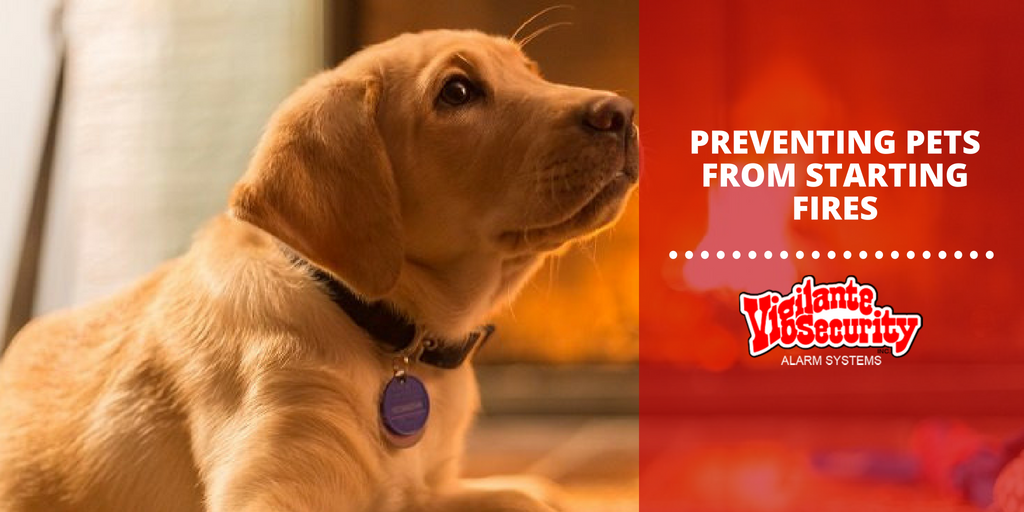Preventing Pets from Starting Fires

About 500,000 pets per year are involved in fires in the United States, with 1,000 fires actually started by pets. Many of these incidents are avoidable if these simple preventative measures are taken.
1. Stovetops
According to the National Fire Protection Association, a stove or cook top is the number one piece of equipment involved in pets starting a fire. The number-one cause of fires started by pets is your stovetop. Dogs can inadvertently switch on a burner while jumping up to get a sniff or steal a snack. Remove or cover knobs on the stove if they are within reach of your pet or keep the kitchen blocked off (i.e. by using baby gates) while you are out of the house if pets have a habit of getting into trouble.
2. Candles
Candles are a common sight in most people’s homes. Always blow candles out before leaving the house. Curious pets can harm themselves investigating the flame and wagging tails can easily swipe a jar off the table. If you have an extra mischievous pet (i.e. puppies!) it may be wise to invest in the flameless variety. These candles contain a light bulb rather than an open flame, and take the danger out of your pet knocking over a candle. Cats are notorious for starting fires when their tails turn over lit candles.
3. Wires
Electrical cords and wires can look like fun and tasty toys to a bored pet. Try to keep phone chargers and plug-in appliances out of chewing-reach – especially for teething puppies and kittens!
4. Unexpected Cause
Do not leave a glass water bowl for your pet outside on a wooden deck. The sun’s rays when filtered through the glass and water can actually heat up and ignite the wooden deck beneath it. Choose stainless steel or ceramic bowls instead.
Pet Rescue Safety
In the event a fire occurs when you are not home, you might not be the first one to get to your pet. Being prepared for a fire can mean the difference between a speedy rescue and a panic situation.
1. Plan Ahead
As you put together your Disaster Preparedness plans, include instructions for all pets that will be inside or outside the house. Be sure to include your pet’s favorite hiding place or safe haven. This can help first responders save time in an emergency.
It’s best practice to keep your pet’s microchips and ID tags up-to-date. Ensure your dog is wearing a collar in the event of an escape, as well as to make it easier for rescuers to handle the pet when frightened. Leashes should also be kept in a visible location to grab-and-go at a moment’s notice.
2. Alert Rescuers
It is also suggested that you know your pet’s favorite hiding places, since that is where they will go when they are scared. Also, since they may panic in the chaos of a fire, they should be evacuated secured by a leash or pet carrier. When leaving pets home alone, keep them in areas or rooms near entrances where firefighters can easily find them.
Since pets left alone can’t escape a burning home, consider using monitored smoke detectors which are connected to a monitoring center so emergency responders can be contacted when you’re not home. These systems provide an added layer of protection beyond battery-operated smoke alarms.
Most importantly, owners should never return to their burning home to look for pets. There have been several instances of people injured or killed by fires when they were looking for pets.


